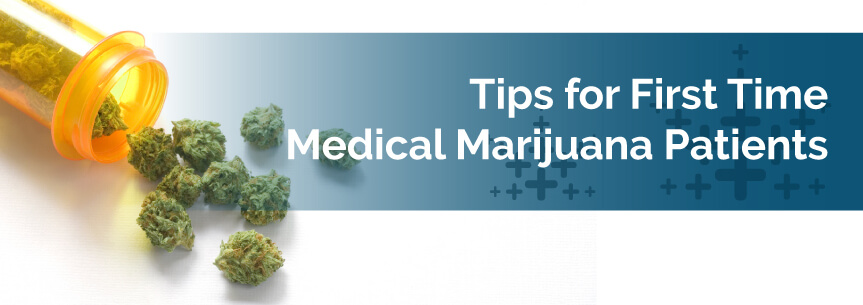
If you’ve recently made the decision to try medical marijuana, then you likely have some questions and concerns about using it to treat your medical condition. Like any new industry, there is a lot to know about medical marijuana.
First things first, though. It’s important to ensure medical marijuana is the right option for your particular health condition. Discussing this with your health care provider should always be the first step. It’s also important to know if medical marijuana is legal in the state you reside in. Regulations about who qualifies and how to legally use medical marijuana will differ from state to state. Be sure to check with your state’s designated department to ensure you know how to properly obtain a legal certificate or medical marijuana card.
There’s also a lot to know about the product itself — this is to say that not all buds are created equal. When applying for your medical marijuana card, ask lots of questions of your health care provider. If you have any concerns about smoking marijuana compared to other consumption methods, then this should also be raised during your appointment.
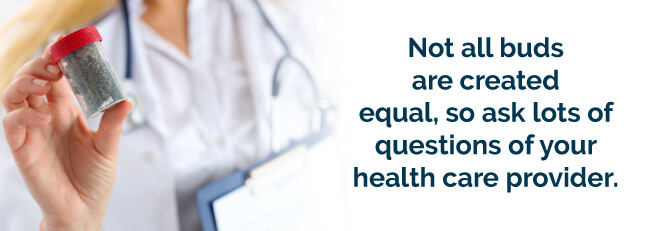
Beyond knowing how to obtain your medical marijuana and how to select the right product for you, there are also a number of safety considerations to take into account. Factors such as your own personal tolerance, your personal preferences as well as your state’s requirements will all come into play.
Because there is so much to consider, we’ve compiled a guide on what to expect with medical marijuana for beginners and how to navigate through the complexities of your new venture with cannabis therapy.
Before getting started with medical marijuana treatment, it is vital to ensure your specific health condition is not only appropriate to treat with medical marijuana, but is also legally recognized in your state. As of November 2016, there are 28 states plus Washington, DC that have legalized the medical use of marijuana.
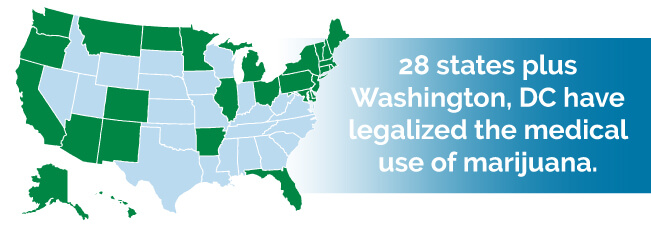
There are many misconceptions about the medical marijuana industry, and it’s common for consumers to be confused about when to seek medical treatment using cannabis. They may not know if their condition can even be effectively treated by medical marijuana, and many are skeptical of the legitimate health benefits.
To help ease the confusion, use the following list as a guideline of common medical conditions with symptoms that are treatable using medical cannabis:
Bear in mind that this is not an official or exhaustive list. Always check with your state’s legalities to ensure your condition qualifies for medical marijuana treatments.
Like any consumer market, the buyer must always beware of what they are purchasing. Medical marijuana is no different. It is important for all first-time patients to do as much research as necessary so they feel comfortable purchasing medical cannabis products.

Here are a few ways to conduct your own research on the medical marijuana industry and the effects of this type of treatment:

To legally purchase and use medical cannabis for the treatment of your symptoms, you must obtain the recommendation from a certified medical health practitioner. Depending on your state, this could be a physician, physician’s assistant, psychiatrist, naturopathic physician, an Advanced Registered Nurse Practitioner or another medical specialist. There are also medical doctors who specialize in prescribing and recommending medicinal marijuana. Research your local state for more information on locating and working with one of these doctors.
To obtain your medical marijuana card, you’ll need to:
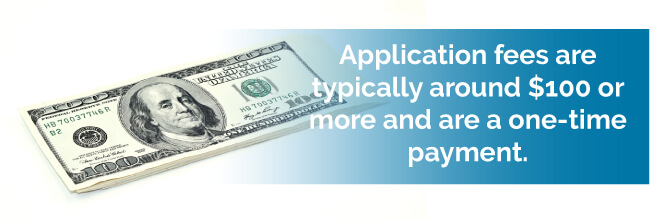
There are a number of places you can legally purchase your medicinal cannabis products from. However, it must be a certified distributor of medical marijuana as approved by your state. Places that are legally authorized sellers of medicinal marijuana products are called dispensaries, and there are many different kinds of dispensaries to choose from. Each operates as its own business, and, therefore, they will each carry different product lines, offer different services and have different staff members available to help.
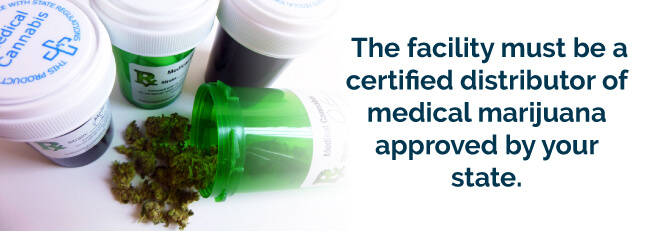
Medical marijuana dispensaries also go by different names including wellness clinics or compassion clinics. Wellness clinics are outlets that offer health and wellness programs to patients in addition to medical cannabis products.
As a beginner, the number of product choices you are faced with may seem overwhelming. This is why it’s important to choose a reputable dispensary to work with. Knowledgeable and compassionate staff will be key in having a positive experience with using medical marijuana. Here are some things to know:
1. Choosing a Strain
The different types of cannabis products available are known as strains and are also sometimes referred to as varieties. Strains are a classification for the different types of plants that the medicinal marijuana products are derived from. The product strains represent the intensity of the effects and the particular experiences they are intended to provide to the consumer. From the different strains, there are multiple other subtypes available.
The following are the main classifications of marijuana strains. Here we break down where these strains are from and which types of conditions they are better suited to treat:
2. THC and CBD Levels
One of the most fundamental factors to consider when purchasing your desired strain of medical marijuana is the strain’s level of THC.

THC (Tetrahydrocannabinol) is the active compound in the cannabis plant that provides the psychoactive effects of consuming marijuana. The THC concentration level of the marijuana products is what determines how strong or weak these psychoactive effects will be. Low levels of THC are generally recommended for first-time users so as to prevent bad or scary first experiences with psychoactive compounds.
Instead, many experts will recommend that first-time users choose products that are lower in THC and higher in CBD (cannabidiol). Unlike THC, CBD is not a psychoactive compound. CBD provides relaxing health benefits that reduce the anxiety-producing effects of THC. Different products will have different ratios of THC to CBD, and so it’s important to inquire about this before consuming any medicinal marijuana product.
3. Try Different Strains
Just as with pharmaceutical drugs, medical marijuana differs from producer to producer and product to product. The effects of each of these products will also vary from person to person. That’s why it’s important to make purchasing decisions based on your own needs and reactions to the products.
When starting out, you won’t have any experience to work with. Experts suggest testing out small amounts of different strains or varieties to determine each one’s effectiveness for you.
4. Choose Your Delivery Method
Once you’ve narrowed down your personal needs and selected your appropriate marijuana strain, your next step is to choose your desired delivery method. This again is a strictly personal decision as different ways to consume marijuana affect each patient differently. If you have particular concerns or questions about marijuana consumption methods, then it’s important to discuss this with your doctor ahead of time. Be sure to ask lots of questions to make the right decision for your personal preferences.
There are several ways to consume marijuana, but the primary methods include:
If you choose to buy your medical marijuana supply from a local dispensary, then it is recommended to work only with a reputable business. Check out the company website and read online reviews such as those on Facebook, Google or Yelp. This can help you see what other customers are saying about the particular dispensary. You may also want to visit a few different dispensaries in person to help get a feel for the quality of service you can expect.

Other elements to consider include:
Here are some suggested questions to ask the dispensary staff or business owners:
The answers you get can help you decide if it’s a company you want to build a long-term relationship with or not.
No conversation on what to expect with medical marijuana would be complete without addressing consumer safety tips. Though medical marijuana is a safe and effective treatment for many patients and medical conditions, there are still precautions to take as you would with any drug. Here are some consumer safety tips to consider when trying medical marijuana for the first time:

Many medical marijuana beginners are concerned about the perception of them using the product to treat their illness. They may not know how to approach the topic with their medical health care provider, their families and friends or their other community members. Because there is still a stigma or certain perception of marijuana consumption, patients may feel embarrassed to ask questions.
Remember that each individual’s medical records are protected by privacy laws set out in the Health Insurance Portability and Accountability Act (HIPAA). This law protects the privacy of medical records and all discussions between a patient and his or her medical healthcare professional.
Keep in mind, however, that though your medical information between yourself and your medical practitioner is legally protected, your conversations between yourself and any employees of medical marijuana dispensaries are not. Employees of marijuana dispensaries are not certified health care practitioners. Whenever you discuss your symptoms and needs with a dispensary staff member, keep in mind that you must use your own discretion.
If you’re ready to try medical marijuana to treat your health condition, then it’s important to find reputable and knowledgeable experts to work with. The right doctor can help suggest a course of medicinal marijuana treatment that can provide symptom relief and help you to restore your quality of life. To find a doctor in your area, use our Find a Doctor search function to help locate a health care practitioner who specializes in medical marijuana recommendations.
Our Dispensary Search function can also help you to find reputable businesses in your area that can help you choose the best cannabis strains for beginners and assist you with your purchasing decisions.
No Information on MarijuanaDoctors.Com should be used to diagnose, treat, prevent or cure any disease or condition. You can view our Full Disclaimer here.